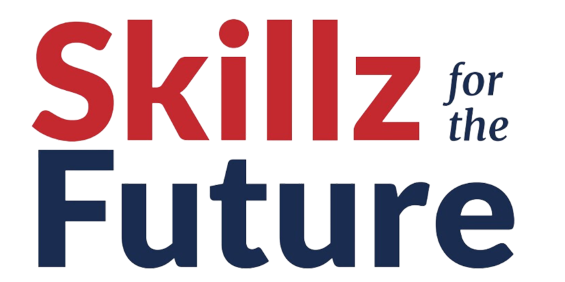Meetings serve as pivotal arenas for collaboration, decision-making, and collective ideation. Whether within the confines of a corporate boardroom, community organisations, or social groups, the structure and planning of a meeting significantly impact its effectiveness. In this comprehensive guide, we delve into the intricacies of planning and structuring meetings, transforming them into dynamic sessions that leave participants feeling fulfilled and accomplished.
Meetings, at their essence, represent a convergence of three or more individuals driven by common aims and objectives. Through verbal and written communication, participants contribute to shared goals, making meetings integral to the dynamics of any organisation.
Meetings, as versatile tools within organisations, fulfil a spectrum of purposes that go beyond mere gatherings:
Pooling and Developing Ideas: They serve as a collective brainstorming ground, fostering creativity and innovation.
Planning: Meetings become platforms for crafting strategies, charting courses of action, and aligning the team toward common goals.
Problem-Solving: Collaborative sessions where challenges are addressed collectively, leveraging diverse perspectives.
Decision-Making: A structured process where conclusions are reached through careful analysis and discussion.
Creating Understanding: They foster clarity and shared comprehension, ensuring everyone is on the same page.
Encouraging Enthusiasm: Dynamic meetings ignite passion and initiative among participants, driving engagement.
Providing Direction: Successful meetings offer a sense of purpose and alignment, steering the team toward collective objectives.
While meeting formats may vary, successful ones universally share three critical elements:
• Distinctive Purpose or Aim: Every meeting must have a clear objective, ensuring that participants understand the intended outcome.
• Effective Communication: Facilitating a seamless exchange of ideas through open dialogue and active listening.
• Controlled Situation: Establishing a structured environment conducive to productivity, where discussions stay focused on the agenda.
Breaking down a meeting into its fundamental components unveils the complexity that underlies its success:
• Content: The collective knowledge, opinions, and information brought by participants, forming the substance of discussions.
• Interaction: The collaborative dynamics and interpersonal aspects influencing cooperation, trust, and active participation.
• Structure: The organisational framework aligning information and participants toward meeting objectives, ensuring a logical flow.
Understanding the diverse purposes of meetings allows for tailored approaches to suit specific needs:
Informing Meetings: One-way communication conveying factual information or decisions, often formal in nature.
Consulting Meetings: Discussions seeking participants’ views on policies or innovations, fostering a sense of inclusion.
Problem-Solving Meetings: Focused sessions where the chairperson clearly outlines challenges, leading to collaborative solutions.
Decision-Making Meetings: Structured processes for analysing problems and reaching conclusions, ensuring a methodical approach.
The linchpin for a successful meeting lies in the attitude and leadership of the chairperson. As the leader, the chairperson shoulders the responsibility of:
Planning, organising, and controlling agenda topics: Ensuring discussions align with the meeting’s purpose.
Fostering harmonious relationships within the group: Creating a positive and collaborative atmosphere.
Motivating individuals: Encouraging all participants to contribute, recognising their efforts, and providing support in overcoming challenges.
Before diving into the logistics of a meeting, the chairperson must address key questions to lay a robust foundation:
Purpose of the Meeting:
• What is to be achieved?
• Is advice needed on a specific issue?
• Is prompt discussion required for an arising problem?
• Is this a regular meeting for keeping members informed?
Meeting Appropriateness:
• Is a meeting the most suitable form of communication?
• Could memos or targeted emails be more effective?
Meeting Planning:
• How should the meeting be structured based on its purpose?
• What is the rationale guiding the meeting’s content?
Attendees:
• Who should attend, considering the nature and scope of the meeting?
• Are attendees representing others, and do they grasp the implications of this representation?
Preparation:
• What preparations are necessary for maximum participant contribution?
• How can the purpose of the meeting be universally recognised?
Crafting an Effective Agenda
The tangible expression of a meeting’s purpose is the agenda. A well-constructed agenda acts as the blueprint for success:
Specifies the time and place of the meeting: Ensuring punctuality and clarity for participants.
Lists topics with assigned introducers: Providing structure and ownership for each agenda item.
Includes relevant papers: Equipping participants with necessary information for informed discussions.
Designates the meeting’s closing time: Respecting participants’ time commitments.
Example Agenda
Apologies for absence: Opening the meeting with courtesy and acknowledging non-attendance.
Minutes of the last meeting: Reflecting on past discussions and decisions for continuity.
Matters arising (from minutes of last meeting): Addressing unresolved issues from the previous session.
Item 1 – Training & Development: Focusing on a specific agenda item with a designated presenter.
Item 2 – Report on Funding: Providing updates on critical financial matters.
Item 3 – Finance & Equipment: Delving into financial aspects and resource updates.
Any Other Business (AOB): Allowing flexibility for additional, unplanned discussions.
Time and date of the next meeting: Closing the meeting with forward-looking information.
By embracing thoughtful planning, strategic structuring, and fostering effective communication, meetings can evolve from mundane gatherings to dynamic sessions that propel organisations and groups toward success.
